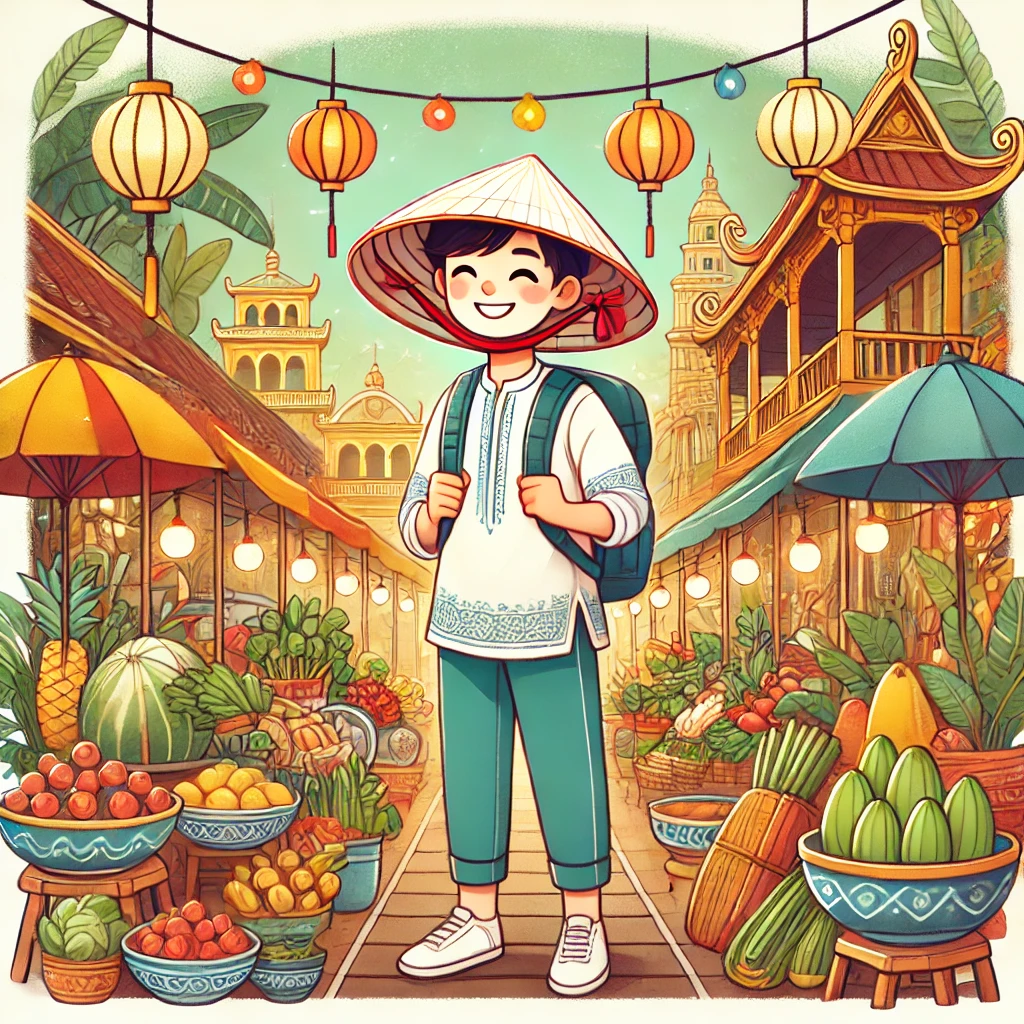Etiquette in Indochina: A Guide for Travelers
Last Updated on 1 May, 2024 by admin
Indochina, a region rich in history and culture, encompasses the vibrant countries of Vietnam, Laos, and Cambodia. Each of these nations boasts its unique charm and traditions, yet they share a common thread in the deep cultural significance of etiquette that governs social interactions and everyday behavior. Understanding and respecting these etiquettes is not just about following rules; it’s about embracing a way of life that has been shaped by centuries of traditions and values.
The etiquette in Indochina is a reflection of the region’s respect for hierarchy, community, and spirituality. While each country has nuances in how these are expressed, many customs are shared due to their intertwined histories and cultural exchanges. For instance, the practice of removing shoes before entering someone’s home, the respectful use of titles and language in conversations, and the importance of communal eating are prevalent throughout Vietnam, Laos, and Cambodia.
Respecting these traditions is crucial for travelers not only to avoid social faux pas but also to deepen their understanding of the local cultures. It transforms simple acts into meaningful exchanges that foster respect and friendship between visitors and locals. For example, knowing the proper way to greet someone, share a meal, or enter a sacred space can significantly enrich the travel experience, opening doors to more authentic interactions and insights into the life and soul of Indochina.

This introduction serves as a guide to the fundamental aspects of etiquette that you will encounter across Vietnam, Laos, and Cambodia. It emphasizes the importance of cultural sensitivity and the impact it has on both the visitor’s experience and the local perceptions of foreign travelers.
Dining Etiquette
Dining in Indochina is not just a daily necessity but a cultural ritual that binds families and communities, reinforcing social ties and traditions. The way people share meals provides insight into the region’s values and etiquette.
Communal Meals
In Vietnam, Laos, and Cambodia, meals are typically served in communal fashion. Dishes are placed in the center of the table, and everyone shares from these bowls rather than having individual plates. This style reflects the communal nature of Indochinese societies, emphasizing sharing and family unity. Guests are expected to take small portions at a time, ensuring that everyone has equal access to the dishes offered.
Chopstick Use
Chopsticks are the primary utensils used in Indochina, and knowing how to wield them correctly is crucial. When taking food from communal dishes, use the serving chopsticks provided, if available, to transfer food to your bowl. It’s considered polite to use chopsticks to pick up food from the dish nearest to you rather than reaching across the table. Once you have served yourself, dip the food in the communal sauce dishes if desired, then eat from your bowl. Never point chopsticks at others when talking or leave them sticking vertically in your bowl, as this resembles incense sticks used at funerals and is seen as inauspicious.
Drinking Customs
Drinking, especially alcoholic beverages, follows its own set of rituals. It is customary to wait until everyone at the table has their drink before anyone begins drinking. A common practice is the communal toast, often led by the oldest or most respected person at the table. The phrase “Một, hai, ba, vô!” which means “One, two, three, cheers!” in Vietnamese, is frequently used. This collective gesture of clinking glasses symbolizes unity and goodwill among the diners.
Eating Posture
The correct posture for eating also holds importance. It is polite to hold the rice bowl up to your mouth using your non-dominant hand while eating with chopsticks in your dominant hand. This posture is not only practical but also prevents spillage and is considered well-mannered. Slurping, while sometimes culturally acceptable in other parts of Asia, is generally subdued in Indochina and should be done discreetly if at all.
Interaction During Meals
Conversations during meals are encouraged and contribute to the lively atmosphere of dining. However, unlike in some Western cultures, lingering at the table after a meal is uncommon. Once everyone has finished eating, it is typical for the host or the eldest person to signal the meal’s end, and people begin to leave the table almost immediately. This quick dispersal is a natural transition back to daily activities and is not considered rude.
Understanding and adhering to these dining etiquette rules can greatly enhance your interaction with locals and show your respect for the cultural norms of Indochina. It is these small acts of consideration and understanding that often lead to deeper connections and a richer travel experience.
Public Behavior
Understanding and respecting public behavior norms in Indochina is crucial for any visitor seeking to navigate social interactions smoothly and respectfully.
Street Etiquette
In the bustling streets of Vietnam, Laos, and Cambodia, certain behaviors are observed with particular attention to decorum. Eating while walking is generally considered impolite across these cultures. The act is seen as making light of mealtime, which is traditionally a time for sitting down, sharing, and socializing rather than a rushed or solitary activity. Conversely, although less palatable to many Western sensibilities, spitting in public, especially among older men, is a more tolerated behavior, often linked to old habits and less about disrespect. This dichotomy highlights the unique cultural standards that can vary significantly from those in Western countries.
Physical Contact
Public displays of affection are generally frowned upon in Indochina, especially in the more conservative rural areas. Holding hands may be acceptable for same-sex friends as a platonic gesture, particularly among women, but other forms of physical contact like hugging or kissing are reserved for private spaces. In contrast, public interactions between men and women are more reserved, and overt expressions of affection can cause discomfort or disapproval among locals. Travelers should be mindful of these norms to avoid causing offense or embarrassment.
Gestures and Beckoning
Hand gestures that are benign or even positive in the West can have very different implications in Indochina. For example, crossing one’s fingers is a gesture best avoided in Vietnam as it is considered vulgar, resembling an offensive symbol. Similarly, beckoning someone with a single finger, especially if the palm is up, is deemed disrespectful and should be avoided. The proper way to beckon someone in these cultures is with the palm facing down, using a gentle waving motion. This gesture is polite and is universally understood within the region. It’s particularly important not to use upward-facing palm gestures which are reserved for calling animals or small children, as this can be seen as demeaning.
These nuances in public behavior, from eating habits to physical gestures, underscore the cultural richness and diversity of Indochina. For travelers, paying heed to these norms not only demonstrates respect but also enriches the travel experience, fostering greater interaction and understanding between cultures.

Respectful Interaction
Understanding and practicing respectful interaction are fundamental aspects of navigating the cultural landscapes of Indochina. This section explores the etiquette surrounding greetings, interactions with children, and the observance of personal space and privacy.
Greeting Customs
In Indochina, greeting customs can vary by country and the specific cultural context, but there are common practices that are widely accepted and respected. In Vietnam, a handshake accompanied by a slight bow is the most common form of greeting among men, often with both hands clasping the other person’s hand, signifying respect and warmth. Women may nod slightly rather than shake hands, especially when meeting someone for the first time. In more traditional or rural areas, verbal greetings accompanied by hands clasped together at chest level, similar to the Thai “wai,” are also common and show respect.
In Laos and Cambodia, a similar gesture called the “nop” or “sampeah” involves pressing the palms together at chest level and bowing slightly. This greeting is used universally across different genders and ages and is particularly important when addressing elders or those of a higher social status.
Interacting with Children
In all three countries, it’s considered disrespectful to touch the head of someone younger than you, especially children. The head is believed to be the most sacred part of the body, where the spirit resides. Instead of ruffling a child’s hair, as might be common in Western cultures, showing affection through verbal praise or a gentle smile is more appropriate and equally appreciated. If you wish to engage further with children, consider gestures like a high-five, which is typically received with excitement and can be a playful way of interacting without overstepping cultural boundaries.
Personal Space and Privacy
Understanding and respecting personal space is crucial in Indochina, especially in public and sacred spaces. When visiting temples or homes, it is respectful to maintain a physical distance from both the people and the religious icons or family altars present. Avoid touching religious objects or entering restricted areas, as these actions can be seen as intrusive or disrespectful.
Public affection between couples is generally frowned upon, particularly in rural and traditional areas. While urban centers may be more lenient due to exposure to international norms, it is always better to err on the side of caution and limit public displays of affection to ensure comfort and respect for local sensibilities.
By adhering to these guidelines for respectful interaction, travelers can ensure that their conduct is considerate and appropriate, fostering positive engagements and deeper cultural understanding throughout their journey in Indochina.
Visiting Homes and Religious Sites
When traveling in Indochina, understanding the proper conduct in private homes and religious sites is vital to ensure respect for local traditions and customs. This section provides key insights into the appropriate etiquette.
Indoor Protocol
In Indochina, it is customary to remove your shoes before entering someone’s home. This practice is also expected in many religious sites and is seen as a sign of respect towards the host and the cleanliness of their space. Often, there will be a visible area or shoe rack at the entrance where visitors can leave their shoes. Following this practice not only shows cultural sensitivity but also helps in maintaining the indoor cleanliness that is highly valued in these countries.
Hospitality Practices
Visitors to homes in Vietnam, Laos, and Cambodia will often find themselves warmly welcomed with offerings of tea, snacks, or even local drinks such as whisky or brandy. Accepting these offerings, even if only in small amounts, is seen as polite and respectful to the host. It is a significant part of the hospitality tradition to show generosity to guests, and reciprocating this by partaking in what is offered demonstrates gratitude and respect. If you cannot accept a drink due to health or personal reasons, it is polite to decline gently and express appreciation for the gesture.
Respectful Behavior in Religious Sites
Visiting religious sites such as pagodas and temples requires mindfulness about dress and behavior:
- Appropriate Dress: Ensure you are dressed modestly when entering religious sites. This typically means wearing clothing that covers the shoulders and knees. Many temples offer sarongs or wraps at the entrance that visitors can use to cover up if their attire is not appropriate.
- Conduct: Speak in quiet tones and avoid loud laughter or shouting. Turn off or silence mobile phones, and avoid taking photographs that may disrupt the sanctity of the site, especially during religious ceremonies or prayers. It’s also respectful to avoid pointing your feet towards religious statues or icons, as feet are considered the lowest and dirtiest part of the body.
- Interactions: When in religious sites, follow the lead of locals or guides when it comes to interacting with monks or religious figures. In some cultures, such as in Laos and Cambodia, women are not permitted to touch or hand anything directly to a monk.
Adhering to these guidelines while visiting homes and religious sites in Indochina not only ensures that you respect local customs but also enriches your travel experience, allowing for deeper cultural immersion and understanding.
Navigating Cultural Differences
Traveling through Indochina exposes visitors to a rich tapestry of cultures and traditions, each with its own set of rules and norms. Navigating these differences thoughtfully is crucial for a respectful and enriching travel experience.
Understanding and Forgiveness
In Indochina, as in many parts of the world, locals generally appreciate when foreigners make an effort to respect their customs and traditions. It is important for travelers to remember that learning a new culture is a process, and minor mistakes are a natural part of this journey. Locals often understand that foreigners may not be familiar with all the local etiquette and are usually forgiving of slip-ups if they see genuine attempts to adapt and respect their way of life. For instance, if you forget to remove your shoes before entering a home or a temple, a quick apology and corrective action are often enough to resolve the situation amicably. Demonstrating humility and willingness to learn from these mistakes can also turn them into positive interactions and learning experiences.
Learning from Locals
One of the most effective ways to understand and appreciate the nuances of Indochinese customs is to learn directly from the locals. Observing and interacting with local residents can provide invaluable insights into the correct conduct and practices. Here are a few tips for learning from locals:
- Engage in Conversations: Whenever appropriate, engage in conversations with local people, be it a taxi driver, a street vendor, or a host at a guesthouse. Many locals are eager to share their culture and customs with interested visitors.
- Participate in Local Activities: Joining in local festivals, markets, or ceremonies can provide practical lessons in local culture. Pay close attention to how locals dress, greet each other, and partake in events.
- Ask Questions: If you’re unsure about the correct etiquette, whether it’s about gift-giving, temple visits, or dining customs, ask questions. Local guides, hotel staff, and even new friends are typically more than willing to explain their customs and the reasons behind them.
- Be Observant: Often, just watching how locals interact with each other and their environment can teach you much about what is considered respectful or disrespectful behavior.
By approaching cultural differences with openness and a willingness to learn, travelers can significantly enhance their understanding and enjoyment of Indochina. This attitude not only helps in avoiding cultural faux pas but also deepens the connections with the people and places you visit, making your experience far richer and more meaningful.
Conclusion
Understanding and adhering to the local etiquette in Indochina is not merely about following a set of rules; it’s about engaging deeply and respectfully with a region that is steeped in rich traditions and complex cultural identities. By embracing these norms, travelers do more than enhance their own experience; they also contribute to a culture of mutual respect and understanding that bridges differences and enriches interactions.
The etiquette and customs of Vietnam, Laos, and Cambodia are reflections of each country’s history, values, and societal norms. When travelers take the time to learn about and respect these practices, they open doors to more meaningful and authentic experiences. Local people appreciate when their customs are acknowledged and respected, and this appreciation often leads to more open exchanges and insights into everyday life that are rarely accessed by the casual visitor.
Moreover, by adhering to local etiquette, travelers can avoid misunderstandings and offensive behaviors that might otherwise sour interactions and lead to negative experiences. It’s important to remember that each gesture, whether it’s the way you greet someone or how you behave at a religious site, communicates respect or its lack thereof. The positive impact of showing respect can not be overstated—it fosters goodwill and can transform simple encounters into memorable, life-enriching experiences.
In conclusion, as you traverse the stunning landscapes and vibrant cities of Indochina, carry with you an attitude of respect and openness. Learn from the local customs and let your actions reflect your respect for the region’s rich cultural diversity. In doing so, you ensure not only a journey filled with incredible memories but also a respectful acknowledgment of the traditions and people who make Indochina truly captivating. Embrace these practices, and you will find that your travels are not just about the places you visit but about the connections you forge and the mutual understanding you foster along the way.




